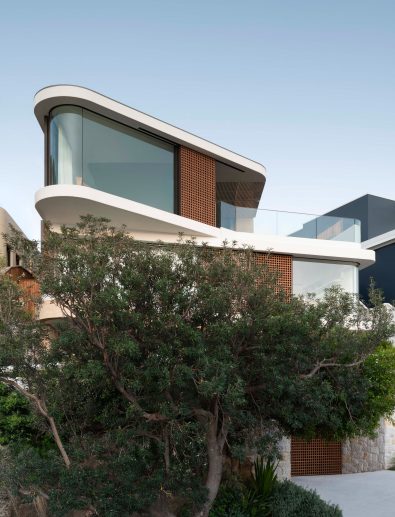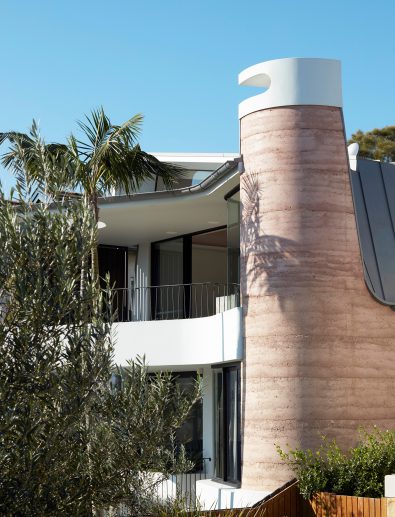Leading Fads in Residential Style You Should Learn About
As domestic architecture proceeds to progress, a number of engaging fads are shaping the method we design and inhabit our living spaces. Trick growths such as lasting building practices, the assimilation of wise home innovation, and the rise of modular homes emphasize a substantial shift towards both capability and environmental responsibility.
Lasting Building Practices
An increasing variety of property projects are welcoming sustainable structure methods, driven by a growing recognition of environmental influence and energy performance. This shift is defined by the integration of eco-friendly products, energy-efficient designs, and cutting-edge building approaches. House owners and contractors are increasingly prioritizing using renewable energies, such as bamboo and recycled metals, which not only lower the carbon footprint however also improve the durability and aesthetic allure of buildings.
Incorporating energy-efficient systems is one more critical element of lasting structure - residential house architect. Features such as high-performance insulation, energy-efficient windows, and photovoltaic panels are coming to be standard in new property styles. These components not only add to lower power intake yet also offer considerable lasting financial savings for homeowners
Furthermore, the design of lasting homes usually stresses all-natural light and ventilation, reducing the reliance on synthetic lighting and climate control systems. Landscaping practices, such as xeriscaping, further promote sustainability by reducing water usage.
As the demand for sustainable living solutions continues to rise, the residential architecture sector is positioned to introduce and adjust, guaranteeing that future homes are not only environmentally liable yet additionally comfy and practical for their owners. - residential house architect
Smart Home Modern Technology
Smart home innovation is reinventing the way property owners communicate with their living spaces, enhancing ease, protection, and energy administration. This innovative technique integrates numerous gadgets and systems, allowing individuals to control their homes from another location or through automated procedures. Central to this trend is the usage of smart gadgets such as thermostats, lighting, safety cameras, and devices, all connected by means of the Internet of Points (IoT)
Among the most attractive features of wise home modern technology is the ability to tailor settings for ideal power efficiency. House owners can check energy usage and readjust heating, cooling, and lights based on their routines, substantially lowering utility costs. Additionally, advanced safety and security systems outfitted with clever locks and surveillance video cameras offer satisfaction, making it possible for remote surveillance and signals to potential security breaches.
Combination with voice-activated assistants improves user experience, allowing homeowners to control tools with straightforward voice commands. As modern technology remains to progress, the capacity for smart home systems to improve lifestyle expands, making them a crucial factor to consider in contemporary domestic architecture. Inevitably, clever home innovation is not merely a fad however an essential shift towards much more smart living atmospheres.
Open Concept Living
Open up concept living has actually become a specifying attribute in contemporary residential architecture, defined by the removal of traditional obstacles between rooms. This style philosophy advertises fluidness and connectivity within the home, permitting a seamless change between locations such as the kitchen area, eating, and living spaces. By eliminating dividings and walls, open idea layouts produce a feeling of spaciousness, fostering a welcoming ambience that improves social communication.

Additionally, this strategy to domestic layout aligns with minimalism, focusing on practical simpleness and visual coherence. House owners value the versatility of these designs, which can be conveniently adjusted to show individual design via furniture arrangement and decoration. As open principle living proceeds to gain traction, it stays a testimony to advancing family dynamics and the wish for homes that improve link and convenience.
Biophilic Layout
Biophilic layout has actually become increasingly significant in domestic architecture, highlighting the inherent link between humans and nature. This layout philosophy seeks to incorporate natural components into living areas, therefore cultivating a sense of well-being and enhancing the high quality of life for passengers. By integrating functions such as natural light, greenery, and organic materials, biophilic layout advertises an unified connection between indoor settings and the environment.
Secret elements of biophilic layout consist of big windows that provide unobstructed sights of outside landscapes, living walls that present plant into insides, and open layout that urge air flow and natural light infiltration. Water attributes, both inside and outside the home, offer to produce soothing ambiences and improve sensory experiences.
Additionally, the use of lasting materials not just supports ecological stewardship however also adds to healthier interior air quality. As recognition of environmental concerns boosts, property owners are increasingly focusing on designs that reflect their connection to nature. Essentially, biophilic design not just elevates visual appeal however also addresses emotional and psychological needs, making it a vital pattern in modern property style.
Modular and Prefab Houses

Additionally, prefab and modular homes are created with sustainability in mind. Lots of suppliers make use of energy-efficient systems and green products, such as solar panels and advanced insulation techniques, adding to lowered power usage and lower energy costs for house owners. The versatility of style options enables modification, satisfying diverse visual choices and functional requirements.
As the demand for economical housing remains to increase, modular and prefab homes provide a practical solution, resolving both economic and ecological difficulties. Communities are significantly acknowledging the possibility of these structures, incorporating them right into rural and metropolitan settings. Generally, the trend towards prefab and modular homes symbolizes a change toward extra sustainable, reliable, and adaptable living settings, making them a pivotal facet of contemporary property style.
Final Thought
Lasting structure methods and wise home technologies enhance efficiency and convenience, while open principle living and biophilic layout foster social interaction and a connection to nature. The rise of modular and prefab homes supplies personalized and cost effective options, showing a broader change towards practical and responsible living.
Trick advancements such as sustainable structure methods, the combination of clever home modern technology, and the you can look here rise of modular homes highlight a significant change towards both capability and environmental duty.The increase of prefab and modular homes has changed the domestic style landscape, providing cutting-edge options for efficient and sustainable living.Moreover, prefab and modular homes are designed with sustainability in mind. Generally, the trend towards prefab and modular homes represents a change towards much more lasting, efficient, and versatile living settings, making them a pivotal aspect of contemporary property architecture.
Sustainable structure techniques and smart home innovations boost efficiency and benefit, while my sources open principle living and biophilic layout foster social interaction and a connection to nature.